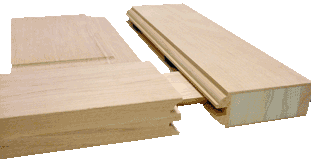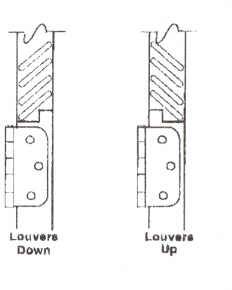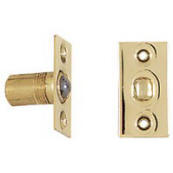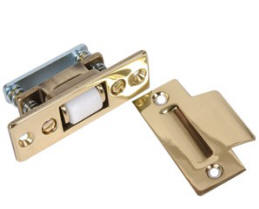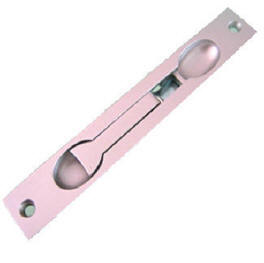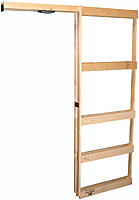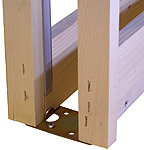About Interior Doors
Interior Doors by Homestead is located in Vickery, Ohio and specializes in nationwide retail sales of wood exterior and interior doors and hardwood moldings. We offer nationwide shipping of our fine hardwood products and regularly ship to every state in the USA and Canada. We have shipped thousands of doors jobsite-direct to hundreds of contractors and do-it-yourselfers. We take great care in crating and shipping our doors and moldings to ensure they arrive at your jobsite in sound condition.
Our skilled sales staff has many years of construction experience to assist you with any technical, installation or design questions. Browsing the information below should help you decide what type of interior doors will be best suited for your project.
-Stile and rail interior doors
-Flush wood interior doors
-Louvered doors
-Single swing doors
-Double doors
-Bifold doors
-Bypass doors
-Multi-pass doors
-Pocket doors
-Double-acting doors
-False louver doors
-French doors
Stile and rail interior doors are made from individual components that are joined together with special woodworking joints and glues. The mortise and tenon is considered one of the strongest joints in interior door construction. Other methods of joinery include dowels, cope and stick, lag bolts or some combination of the same. Stile and rail doors usually have either raised panels or flat panels depending on your taste. The panels of a stile and rail door can be arranged in an almost unlimited number of configurations with the traditional raised 6-panel door pictured to the right being one of the most popular.
Mortise and tenon joinery in stile and rail interior door |
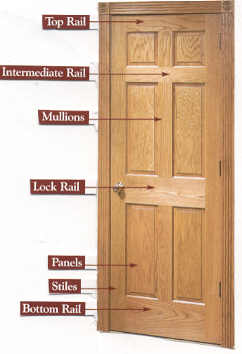 |
Louvered doors are available with standard slat 1-directional louvers or chevron louvers which look the same from either side. Standard louvered doors have fixed or movable wooden fins (often called slats or louvers) which permit open ventilation while preserving privacy and preventing the passage of light to the interior. Standard louvered doors usually have relatively weak structures and are most commonly used for wardrobes and drying rooms, where security is of less importance than good ventilation. Doors incorporating chevron louvers are considered stronger and are used in higher end construction. Louvers can be used with flush doors or stile and rail doors.
False louver doors have the same look as venting louver doors but do not have air spaces between the louvers. False louver doors are used when you have doors that need greater soundproofing but still want the louvered appearance. Bedroom entry doors would be a good example of where a false louver door would be used.
Standard 1-directional slat type louvers |
Chevron louver |
False louver |
Double doors are 2 single swing doors
hung together in the same jamb with both opening from the middle.
Double doors for closets usually have ball catches or roller catches
installed in the tops of the doors to hold them shut (see photo
below).
Dummy knobs are used on double doors with ball or roller catches
and should not be prepped for a conventional lockset.
Double doors going into a bedroom or office where privacy is desired will require a conventional lockprep on the active door. You must determine which door will be used the most and this will become the active side. The passive side is secured with a flush bolt into the top jamb. This will keep the passive door stationary and locked in place which gives the active door something to latch into. The flush bolt can easily be unlatched to allow for full opening of both doors. The passive door will also need to have a flush or t-astragal secured to the outer stile. This astragal gives the active door something to close against when security is desired.
 |
Ball catches |
Roller catches |
Flush bolt |
Pocket doors slide on rails and disappear
inside a wall rather than swinging on hinges. There is ![]() nothing
special about the door itself and most any door can be installed
as a pocket door. The pocket door hardware and pocket door frame
is what distinguishes this type of door from others. Rollers are
fastened to the top of the door slab. They slide on a metal track
that extends back into the wall the same width as the door. The
pocket frame is what creates the hollow cavity in the wall for
the door to slide into. In new constructions the pocket frame must
be installed before the drywall is applied to the walls in
the room. Pictured below is a Johnson #2700 pocket door frame for
doors 1-3/8" thick and 80" high with Johnson #2710 aluminum
track and rollers for doors up to 125 pounds.
nothing
special about the door itself and most any door can be installed
as a pocket door. The pocket door hardware and pocket door frame
is what distinguishes this type of door from others. Rollers are
fastened to the top of the door slab. They slide on a metal track
that extends back into the wall the same width as the door. The
pocket frame is what creates the hollow cavity in the wall for
the door to slide into. In new constructions the pocket frame must
be installed before the drywall is applied to the walls in
the room. Pictured below is a Johnson #2700 pocket door frame for
doors 1-3/8" thick and 80" high with Johnson #2710 aluminum
track and rollers for doors up to 125 pounds.
JOHNSON HARDWARE POCKET DOOR FRAME VIDEO
|
|
|
|
|
|
pocket door frame |
side view of hardware |
closeup pocket door frame |
rollers fasten to top of door |
roller track |
pocket door guides |
Bifold interior doors consist of 2 door slabs hinged to each other and folding together like a book. They are hung on a track with special bifold hardware. Two pairs can be hung together to create a double bifold consisting of 4 door slabs with one pair folding to the left and one to the right. Wood is the most common material, and doors may also be metal or glass. Bi-fold doors are most commonly made for closets, but may also be used as units between rooms. Pictured below is Johnson #1825 bifold hardware which can be used for residential duty doors up to 1-3/8" thick and up to 35 pounds per panel or 70 pounds per pair.
 |
 |
 |
||||
Johnson 1825 bifold hardware |
Bottom pivot bracket |
Bottom pivot |
Top pivot |
Top pivot socket |
Track stop |
Bypass sliding interior doors are 2 doors that slide past one another. The doors can slide from each direction on an overhead track. They are most commonly used in closets. The biggest drawback to bypass sliding doors is that only one side of the closet can be accessed at a time. The doors in a bypass unit will overlap slightly, in order not to have a gap between them. Pictured below is Johnson 138F sliding door hardware which can be used with 1-3/8" thick doors up to 200 pounds.
 |
 |
 |
 |
||
 |
 |
 |







